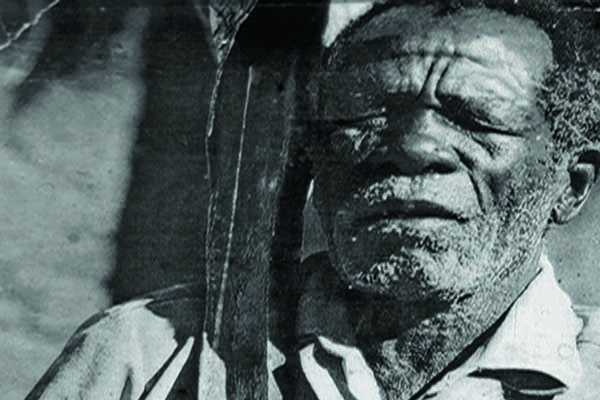Ratsie Setlhako immortalised in book & documentary
The song ‘A re chencheng’ by musical prodigy Ratsie Setlhako is one of the most known created in pre-colonial Botswana.
For many years, the song has played as prelude to the popular show Dipina le Maboko on government radio station, RB1. Ratsie Setlhako is a musical marvel, appreciated as one of the godfathers of folk music in Botswana.
He has also been celebrated posthumously on various platforms. There is now a book that traces his roots, celebrates his musical artistry and tries to unpack the enigma that he is believed to have been. The book titled ‘Definitive biography of Ratsie Setlhako’ by Modirwa Kekwaletswe was launched in December 2017 to great acclaim.
In an interview with BG Style, Kekwaletswe, who is a writer, visual artist and graphic designer, says that his interest in the life of Ratsie Setlhako was ignited while he was still a writer in the newsroom after he realised that there was little information about Ratsie Setlhako. The project would take him 18 years to complete. His first point of enquiry was Batho Molema who recorded Setlhako and other folk artistes, before Setlhako’s death. “Molema affirmed that I needed to do the project. He conceded that he recorded all these artistes but there was little time to talk about their history, their life and inspiration,” Kekwaletse points out.
He bore the onus of finding out more and went to Setlhako’s home village Mokgware and also Palapye, Selebi Phikwe and Mahalapye, where the artiste spent a lot of time. When the initial book draft was complete, Kekwaletswe thought he had a solid project and was ready to publish but it was still lacking in substance and depth – he needed more information. “However, my funds were running out so I sourced funding to complete the project,” he recalls. Kekwaletswe received a P610, 000 grant from Companies and Intellectual Property Authority (CIPA) to complete the project, which includes a book and documentary.
Ratsie Setlhako was born in 1890 in Mokgware village, and was of the Mosokola regiment (also known as Mophato) at a time when the tsie (locust) was rife: hence he was fittingly named Ratsie. He grew up to be a herd boy and he taught himself how to play the segaba, widely considered an African zither. His music was appreciated in his later years as he was invited to play across the country. Throughout his research, Kekwaletse unravelled interesting bits of information about Ratsie Setlhako. “For one, I established that he was a Mokaa from the Barolong, who were later, moved to the north by Kgosi Kgama III,” he says. But it is his music that stands out. Kekwaletswe says: “His music is complex, and boasts rich analysis. The use of words and synopsis is outstanding – he was exceptionally talented.” He further points out that Ratsie Setlhako did not rely on imagination but sang about real incidents, scenarios and people. “He used people’s names in the songs. These were not random names but of people related to his lifestyle,” he says. He also notes that Ratsie Setlhako was one of the first Batswana to appreciate that music can be a career.
“From Lobatse to Old Naledi to Phikwe and Nata, he traversed Botswana performing and was appreciated for it.”
Ratsie Setlhako’s made his spiritual transition after he died in a road accident in Palapye and was buried in the same village. Although little is shared about his private life, Ratsie Setlhako is believed to have had an intimate partner who bore him three children. The woman would later bundle up the children off to South Africa. The woman is said to have passed on, together with two of the children, at different stages. Ratsie Setlhako then found a partner in Garelekane Morakane, who received the Presidential Honour on his behalf in 1979/80. There is also a primary school in Palapye named after the artiste. Kekwaletswe says they are still working on getting the book around the country and would soon have it available in major bookstores.
Call 71 32 19 72 to order a copy of the book.






